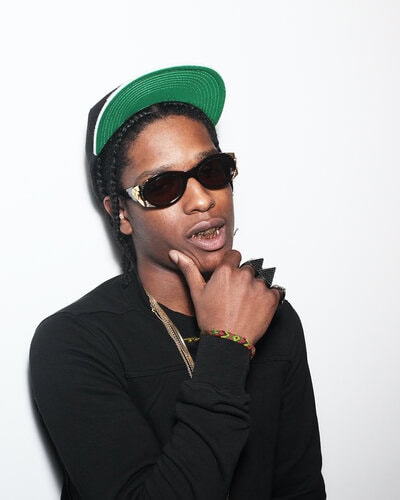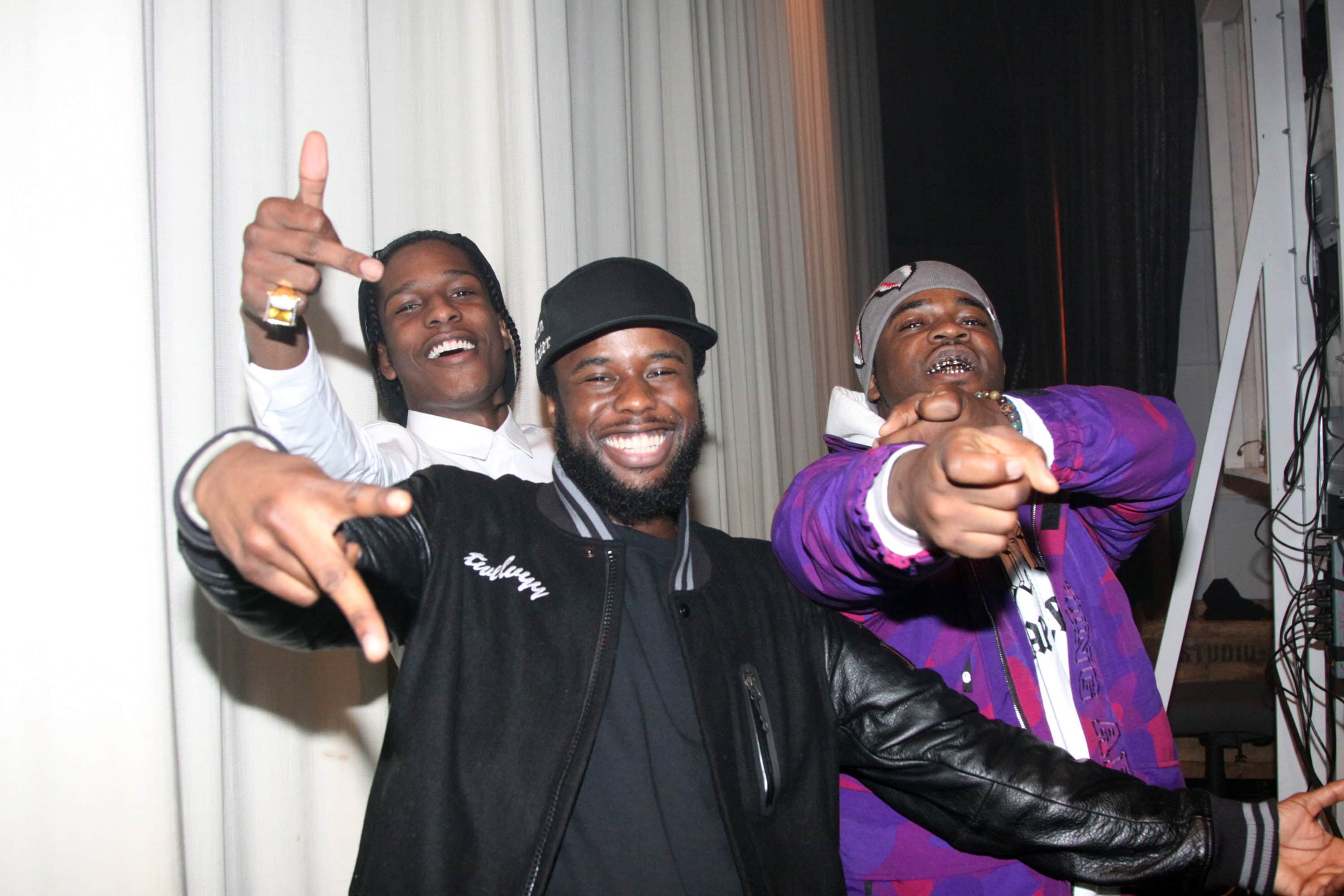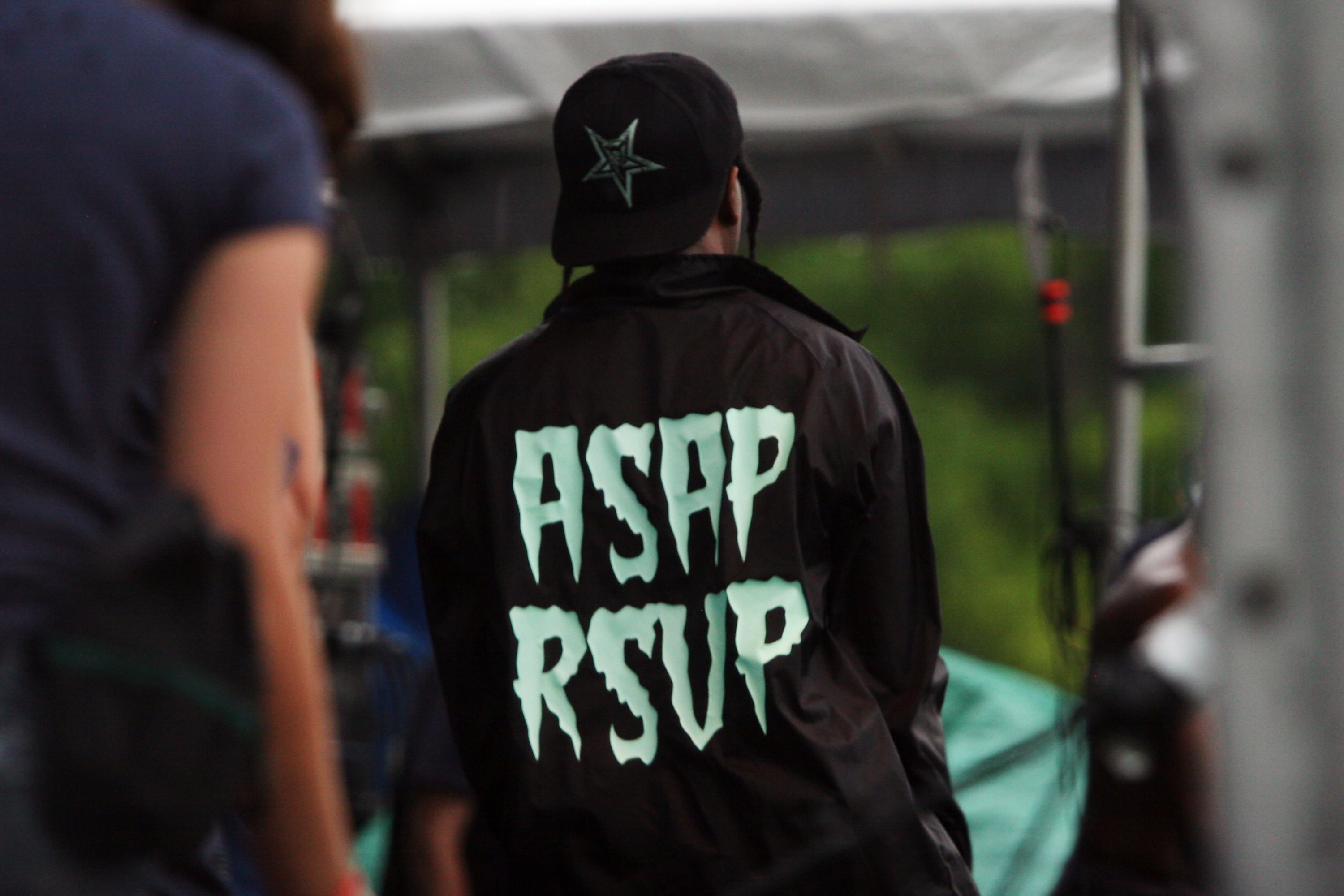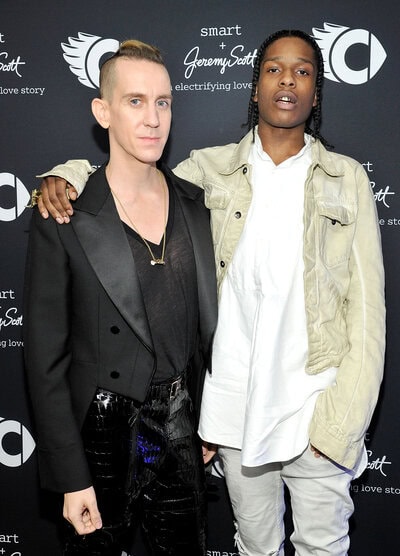At the beginning of 2011, A$AP Rocky was a relative unknown. By the end of that year, he was a millionaire with the kind of creative control even top artists still chase today.
Over the course of the past week, A$AP Rocky has seen his ascent come full circle.
On Friday, Oct. 29, his debut mixtape, Live. Love. A$AP, became available on streaming services, celebrating its 10-year anniversary on Halloween two days later. This weekend, Rocky is slated to headline ComplexCon, performing the pioneering project in its entirety.
While A$AP Rocky is a household name today, few knew who he was before the release of his first project.
That few included Geno Sims, a music industry veteran and longtime A&R who had worked with the likes of N.O.R.E., Puff Daddy, and a host of other characters that carved a lane in New York hip-hop and beyond.
Before viral videos for “Peso” and “Purple Swag” would make A$AP Rocky an Internet darling, Sims was catching wind of the fashion-forward rapper. Growing up in Harlem, Sims was close to A$AP movement, having known many members of Rocky collaborator A$AP Ferg’s family. Ferg would introduce Sims to Rocky, eventually setting up the longtime A&R for a role in management.
At that time, however, Sims had taken somewhat of a break from the music business, working in advertising. While working on campaigns and partnerships for LVMH, Sims sent a message to friend Bryan Leach, founder of Harlem-based Polo Grounds Music.
The conversation started around a liquor endorsement and Mr. 305, soon shifting to street buzz and an artist from the 212.
“I hit Bryan about a project regarding Pitbull,” Sims told Boardroom. “We were talking and I said, ‘By the way, I’m shocked that you’re not on this A$AP thing.’ He immediately said, ‘I’m gonna call you.'”

Having known Bryan for years thanks to his work with Bad Boy Records and many players in the music space, the two Harlemites saw something in the local star Rocky that the world was yet to catch onto.
Bryan was a certified star-maker, heading up Polo Grounds and giving the world acts ranging from Pitbull and Lil Jon to the Ying Yang Twins and Yo Gotti. Through Polo Grounds, Rocky could have legitimate backing in his own backyard of Harlem while working with someone who had helped stars that grew international fan bases.
So, who else was interested in Rocky and who was willing to help?
“I had sat with Stephen Ferrara at Columbia Records,” Sims said. “We were supposed to have a third and final meeting about me getting hired there, but Stephen went quiet. I didn’t learn until later that he had health issues and he passed from cancer.”
With Columbia out, the label who had put out everything from Miles Davis’s Kind of Blue to Nas’s Illmatic, suitors off all sorts proved interested in representing Rocky .
“A lot of people were trying to sign Rocky,” Sims said. “I know Puff wanted to sign Rocky, Def Jam at some point wanted to sign him but they jumped on late. Even when I first got with Rocky, I played it with Pharrell just to share it with him.”
On the streets and behind the scenes, the buzz was building around A$AP Rocky and his crew.
When it was all said and done, Leach’s Polo Grounds Music and its distributors, RCA Records, proved the perfect pairing.
The Deal
“Bryan, Rocky and his attorney stepped up, did the deal and RCA backed them,” Sims said. “RCA was hands on and hands off at the same time.”
As history tells it, Leach, Rocky and his attorney were able to secure a deal for a whopping $3 million.
RCA gave Rocky not just money to back his projects but space for Rocky and his righthand man, the late A$AP Yams, to do it their way.
“I’m going to have creative control; there’s no bullshit,” Rocky told Pitchfork back in 2011. “The situation is almost unrealistic. I mean, five months ago I had about $3,000 in my bank account. Now I’m worth $3 million. Nobody’s gotten a deal like that since 50 Cent.”
Forever a historian, Rocky was right.
Much like how Interscope allowed 50 Cent to build G-Unit Records back in 2003, Polo Grounds and RCA had given Rocky the funding for A$AP Worldwide. Also known as the A$AP Mob, Rocky and Yams now possessed the power to build and break artists such as A$AP Ferg, A$AP Twelvyy, A$AP Nast and more.

“The great thing was Bryan wanted Rocky and Yams to do them,” Sims said. “The way it was structured favored Rocky creatively. After that, everybody wanted an A$AP Rocky deal.”
The Mixtape
On Oct. 31, 2011, A$AP Rocky released his debut mixtape, Live. Love. A$AP.
Most people believe the breakthrough project is what convinced Polo Grounds and RCA to give Rocky and his crew the $3 million deal. However, that’s not the case.
“When we dropped the mixtape, Rocky was already signed,” Sims said. “We just didn’t announce it.”
Finishing the mixtape at Wyclef Jean’s Platinum Sounds Studio, Sims, Leach, and A$AP Yams worked with an engineer to mix and master the final project.
While the sonics were shaped in the studio, the cover art came together at housing that Polo Grounds and RCA had provided for Rocky and the Mob. Located on 57th Street, Leach rolled over to the A$AP casa with a horde of hockey masks and revered photographer Brock Fetch. From there, the ball was passed to A$AP Yams to tie up the loose ends and direct the rollout.

“Bryan stayed out of the way and wanted things to be them,” Sims said. “To roll it out for Halloween weekend, all of that was Yams, the whole idea.”
With Yams running the rollout, the label powers and management used their leverage and connections for magazine placements and printing physical CDs. The tape released for download on DatPiff and was instantly picked up by NahRight and all the top hip hop and music blogs of the time.
Heralded for its blend of ambient production and Houston influence, Live. Love. A$AP was a complete departure from anything rap had ever looked or sounded like, yet was still emblematic of everything that had come before it. Like the rollout, it was Yams who made the most of the creative control that Polo Grounds and RCA handed over.
“Yams was really a student of the game,” Sims said. “He was a guy who really studied culture, the players and territory. He was the one who kind of gave Rocky his direction on how to rap, he was pretty much the creative director and A&R of A$AP. He did a great job because he really was a student of the game. He soaked it all up and fleshed it out really well from a creative perspective.”
The Legacy
With the record deal and release of his debut mixtape, Rocky was rich, famous and had Harlem behind him.
“The energy was unmatched,” Sims said of New York’s embrace of its newly crowned superstar. “Rocky at that time was that golden child.”
Over the course of his 10 years on top, Rocky has released multiple No. 1 albums while doing deals in fashion, footwear and beyond with an unmatched level of autonomy. Just the same, the A$AP imprint has allowed Ferg to flourish as a solo artist and the brand to grow global.

Whether directing his own videos or deciding which designers to don, Rocky has been able to touch all aspects of his creative output throughout his career. It all started with that first $3 million deal from Polo Grounds and RCA.
“He spawned a lot of what you see today,” Sims said. “Rocky was that guy that paved the way for all that’s going on right now.”
In an era where artists such as Billie Eilish and Travis Scott exist as their own brands and appear as their own bosses, it was Rocky and the power invested in him by Polo Grounds and RCA that provided a formula of what creative control really looked like.
This was far from the form then, even if it’s shaped the world we live in now.
“Labels back then were reactive,” Sims said. “A lot of labels wanted to sign Rocky, but they were just telling him to come to the office when the fact is all they had to do was pull up on him. That’s a lesson that I hope labels learn: You have to get in the field.”
Sims cites Leach as meeting Rocky where he was at and building a real relationship with him and the Mob as incredibly important. Just the same, Sims notes that it was also RCA who gave ground to another legendary New York hip hop outfit that became a global brand and movement, the Wu-Tang Clan.
By handing the keys to Rocky and Yams, the A$AP brand blew up without the restraints or shadow of a major label.
While Sims no longer works with Rocky, he credits the deal done by Polo Grounds and RCA as the perfect setting for the A$AP movement as a whole to flourish.
“It wouldn’t have worked in any other building,” Sims said. “Bryan by any means wanted to make sure that A$AP preserved their brand. Bryan knew what they wanted all the way to them crafting their deal. We pretty much gave them the script and the rest is history.”